Recipe updated: March 13th, 2024
The F1 Goldendoodle, in my opinion, is one of the best family dog breeds you can have, especially if you have young children. We have had a couple goldendoodles. While each has had their own personality and differences, they shared many traits. I believe, these designer dogs are one of the best hybrid breeds that exist.
So, what does F1 goldendoodle mean? In this article, I will discuss what a goldendoodle is, what F1, F1b and F2, F2B, and F3 mean, and our experiences with our puppies.
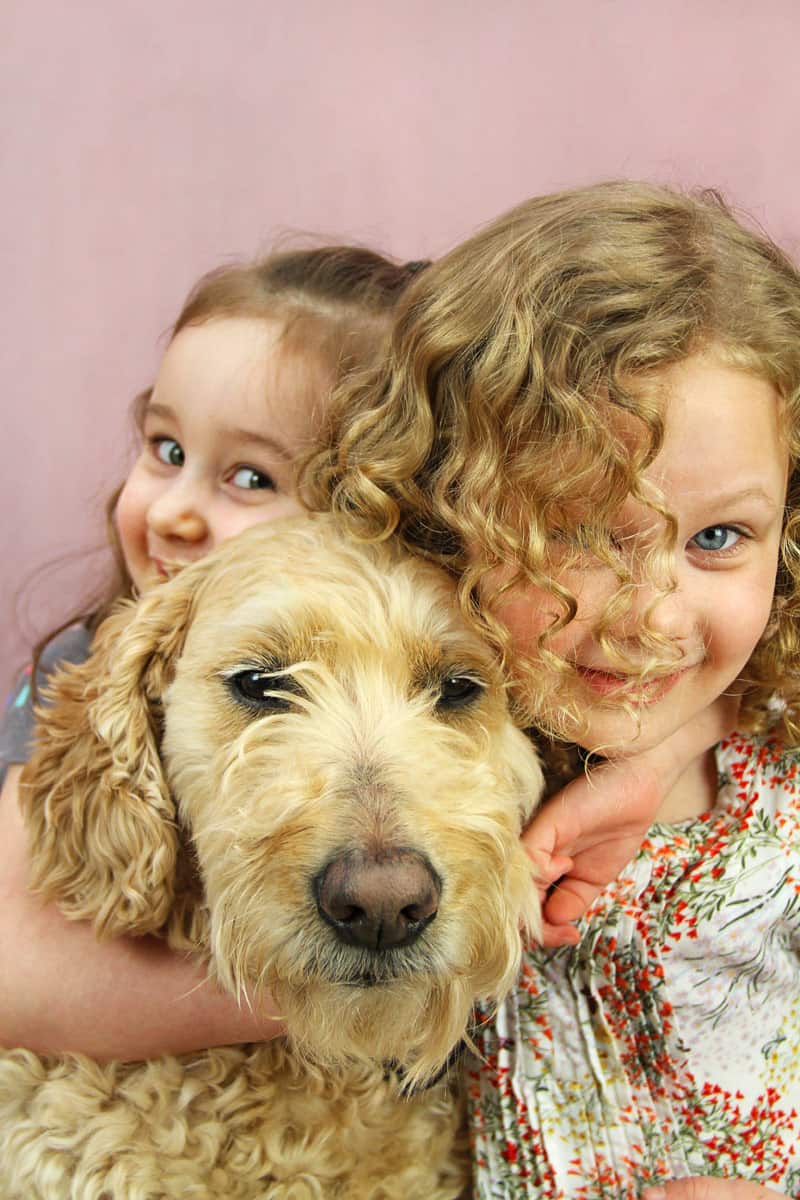
🐶 Types of Goldendoodles
The subject I would like to discuss is the types of goldendoodles. Before the breed gained popularity for their awesomeness, people considered them just another mutt. But these goldendoodle puppies are no ordinary mutts! The whole point of crossbreeding two purebreds is to inherit the best physical characteristics, health conditions, hypoallergenic qualities, and physical traits of each breed. The goldendoodle definitely comes out on top with their genetic makeup. Being half golden retriever and half poodle, they only get the best traits from each breed. They are extremely friendly dogs that are low shedding, smart, playful, loving, loyal, social, hypoallergenic, athletic and absolutely the best choice if you are looking for all of these qualities in one dog.
Make sure you find a responsible breeder because there are a lot out there that will try to sell mixed breed dogs that are not purebred golden retrievers and purebred poodles. These puppies could be good family dogs, they just won’t exactly be goldendoodles; because goldendoodles only mix between two pure bred dogs, the purebred poodle and the purebred golden retriever. Before you fork out big money for an actual goldendoodle, you want to make sure you are dealing with a reputable breeder.

Goldendoodle Generations
There are distinctions between goldendoodles that you should be aware of. When you look at buying a goldendoodle and you see the F1 or F2, the “F’ stands for filial, which is another word for generation. It is an indication that the goldendoodle is crossbred and not a purebred. F1 means first generation goldendoodles, which is when a golden retriever and a poodle have a puppy. F2 means 2 goldendoodles have puppies. You can also have another designation F1B, the “B” means backcross. An F1B is when a goldendoodle and a poodle have a puppy. There is currently no designation for a Goldendoodle and Golden Retriever having a puppy, as F1B indicates only for the poodle backcross. I will explain why below. The type of goldendoodle generation might be very important to you. Let’s dive deeper into the different generations.
What is an F1 Goldendoodle?
F1 goldendoodles are a cross between two purebred dogs: 50% Golden Retriever and 50% Poodle. These puppies are all love; however, it is basically a toss-up on certain traits. Depending on which trait is present themselves, you may get a dog with a wavy coat like a golden retriever or curly hair like a poodle. With the hair, you may get a dog that sheds, less than a golden retriever, but way more than a poodle. You may get a dog that is susceptible to issues that both the parent breeds have, such as hip dysplasia, heart disease, severe allergies and cancer. As far as size goes, they are usually around 50 to 90 pounds and 20 to 26 inches tall. Our F1 goldendoodle maxed out at about 65 pounds and 24 inches tall.
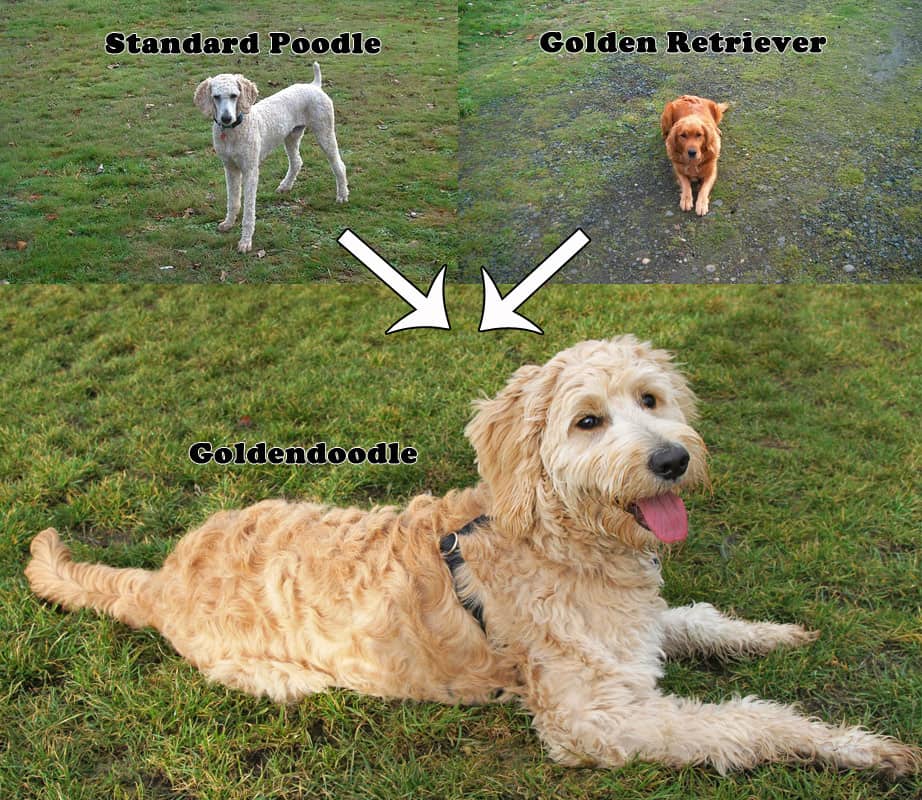
What is an F1B Goldendoodle?
F1B goldendoodles are 25% golden retriever and 75% poodle. These goldendoodles have a greater chance of the hypoallergenic coat, however, they resemble the poodle much more. You will be combing and grooming the curly coat more often to prevent matting. These puppies have more traits associated with the poodle as well. This hypoallergenic dog breed is ideal for allergy sufferers. They are made by breeding an F1 goldendoodle with a standard poodle. They end up being around the same size as F1 goldendoodles.
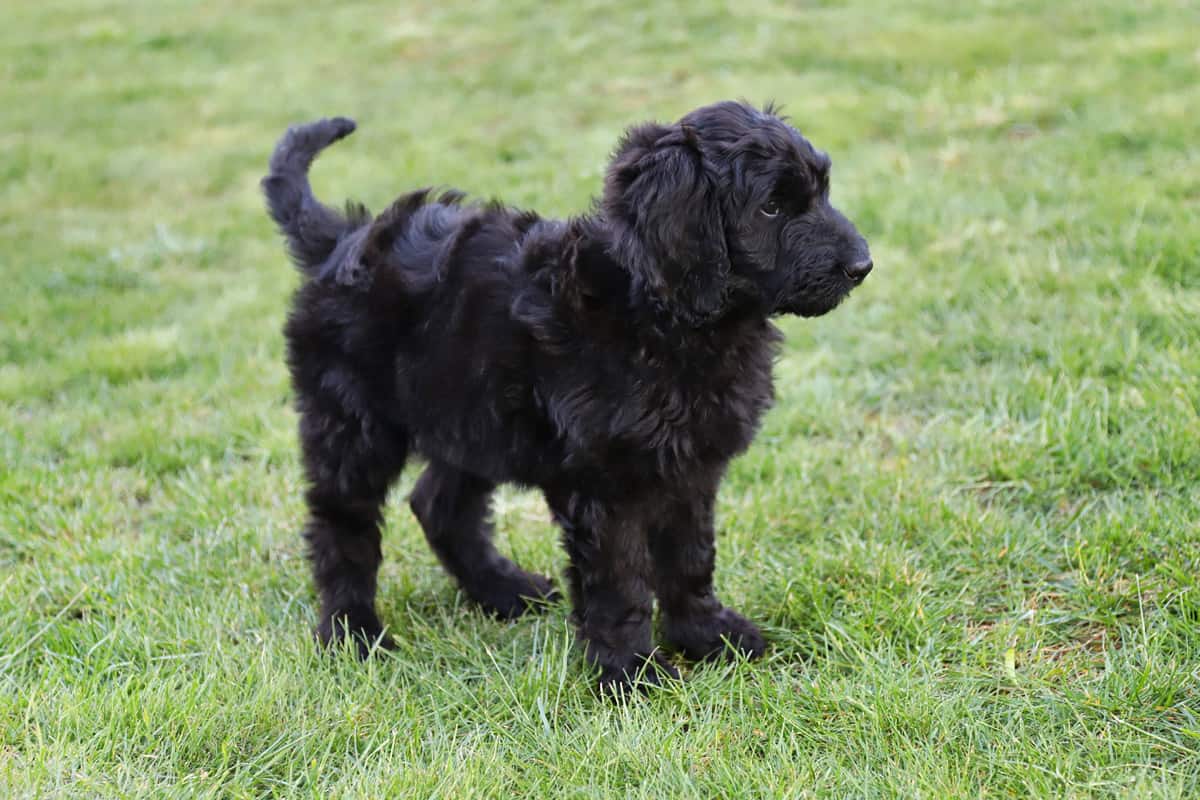
What is an F1BB Goldendoodle?
Cross between an F1B goldendoodle and a purebred poodle. They are 87.5% poodle and 12.5% golden retriever. This generation of the goldendoodle is often chosen because of the hypoallergenic qualities. With both parents not shedding, the F1BB is very likely not to shed as well.
What is an F2 Goldendoodle?
You are still getting the 50% Golden and 50% poodle, there is just a track record of presented traits. F2 means second generation goldendoodles. F2 goldendoodles are obtained by breeding an F1 goldendoodle with another F1 goldendoodle. There is less uncertainty about what you are going to get as far as coat types and maladies the puppies will have based on their parents. These dogs are usually desirable for people who want more of the golden retriever look accompanied with the hypoallergenic coat.
What is an F2B Goldendoodle?
F2B goldendoodles are bred with an F2 goldendoodle and a purebred poodle. They are 62.5% poodle and 37.5% golden retriever. This generation has a lot of the poodle genes and so they will have less shedding and have wavy or curly coats.
What is an F3 Goldendoodle?
F3 goldendoodles are bred with two F2 goldendoodle parents and are the third generation of the goldendoodle. These goldendoodle breeders can get you the specific coat color and size you want. Two F2 goldendoodles ensure puppies retain specific characteristics. They are 50% poodle and 50% golden retriever but tend to have more of the personality of the golden retriever.
What is an Multigen Goldendoodle?
A multigen goldendoodle is a dog that results from breeding with any F3 or more (F4+) hybrid parents. In other words, the parents and grandparents of multigenerational goldendoodles are also goldendoodles.
What is a Mini Goldendoodle?
A mini goldendoodle is almost just like a standard goldendoodle except the golden retriever is crossed with a miniature poodle (or toy poodle) instead of the standard poodle. They are considerably smaller than the standard goldendoodle in that they only reach of height of 17-24 inches and get to be 15 to 35 pounds. Mini goldendoodles can have all of the generations that the stand goldendoodle has.
🥇 Which Goldendoodle is right for me?
We have had an F1 and F1B goldendoodle. Due to my allergies to pet dander, we wanted a dog that didn’t shed much. I do not have severe allergic reactions to pets, I just get headaches when inside homes with cats and heavy shedding dogs. Both our dogs shed a little, but the F1B was considerably less. The wet dog smell set off my allergies. Other than that, my allergies did not affect me. To find the best doodle for you, I’d suggest checking out puppies.com and searching for goldendoodles near you.
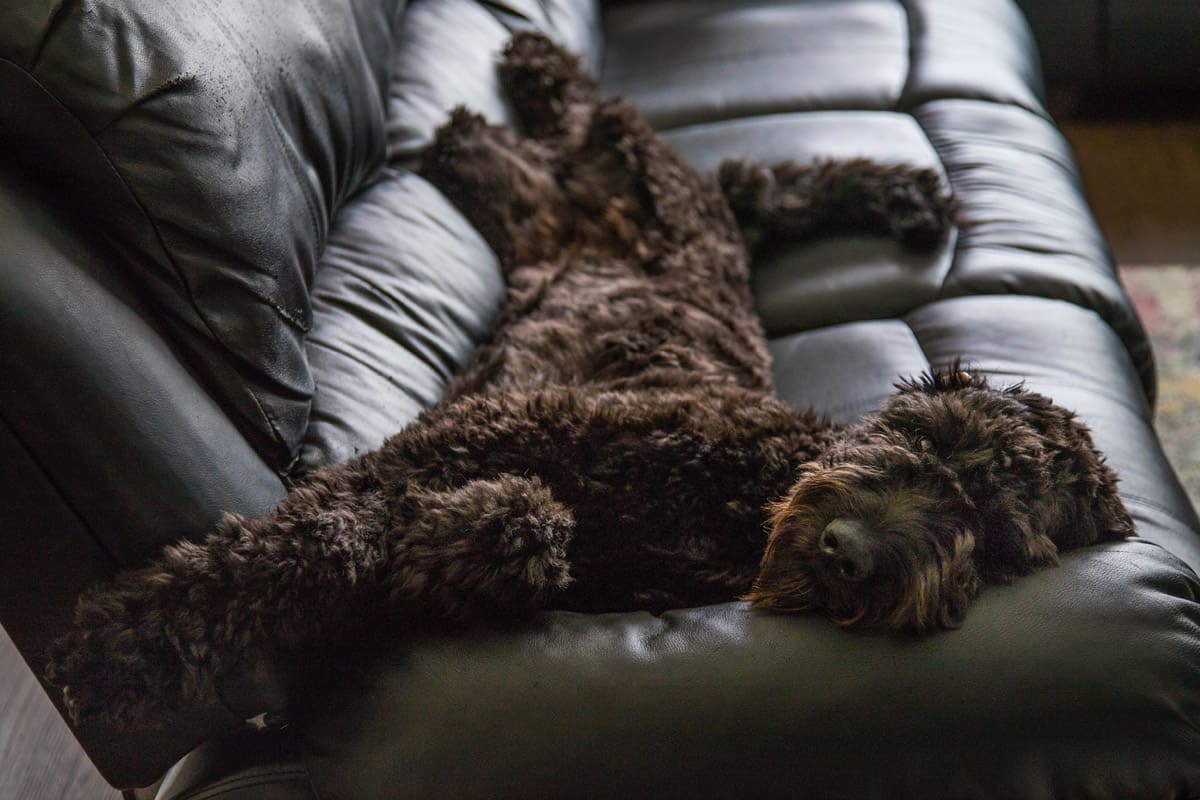
The Main Differences of the F1 Goldendoodle and Other Generations
Kona, our F1 doodle, was more golden retrieveresque when it related to retrieving. She was also more territorial, barking at the door when the doorbell rang, or as other dogs went by. Kona also demonstrated more separation anxiety. Kona was a great therapy dog and wanted to learn every trick to please me. She was a good dog and we missed her tremendously when she passed away in 2018. We always joked that she was part human because she went everywhere with us, sat everywhere we sat, danced with us, and practically knew everything we were saying.
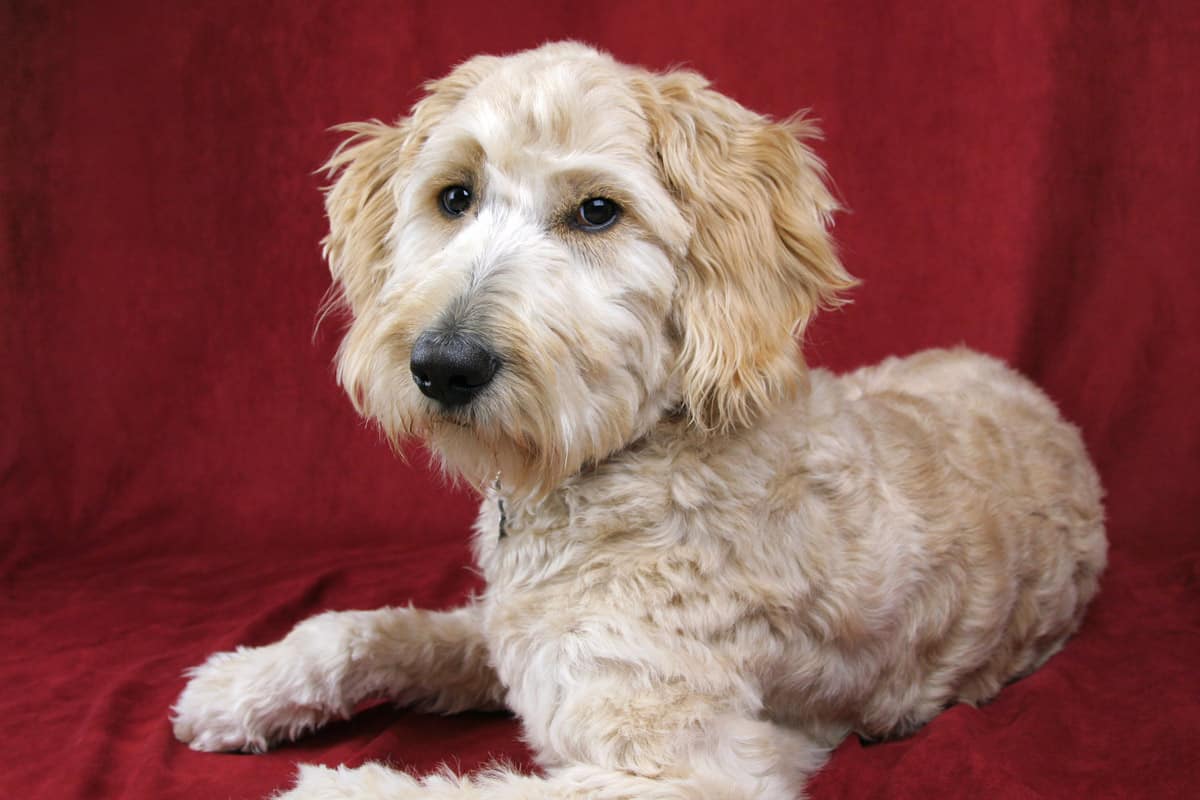
We got Koko, our F1B, 2 years after Kona passed away after the start of Covid-19 in March 2020. When playing fetch, she would get the object but never bring it back unless I had a treat! She was mellower around other dogs and people walking by our house. Koko still loves to be around the family but is less stressed when left alone. Koko sheds less but mats up (gets knots in her fur) more. We ended up grooming her way more often to keep her coat shorter to prevent the matting. Brushing would also prevent the matting. As her coat got longer, I also noticed she would drag in more from outside, so there is a trade-off to the curlier, more hypoallergenic F1B coat. Koko learned the tricks, but only for the treat!
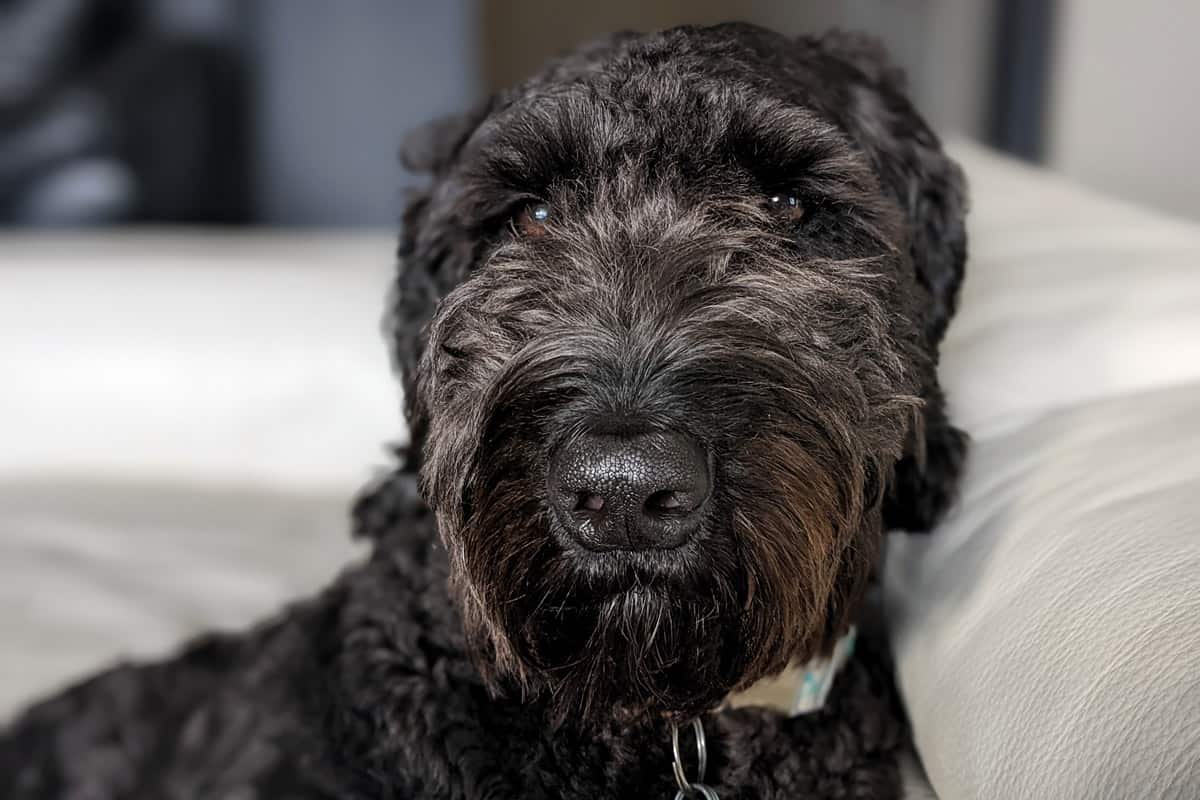
The Main Similarities of the F1 Goldendoodle and Other Generations
There are tons of similarities between the F1 goldendoodle and all of the other generations. The main similarities I see between our doodles is how smart they are, how much they love barking at squirrels, and how much they love their family. Both of our doodles were/are great family dogs. Kona (F1) let our toddlers crawl over her, drool on her and pull her ears until we could teach them how to pet nicely. Our youngest daughter still has a stuffed animal she sleeps in bed with called Kona. Koko (F1B) thinks she is one of our daughters, running and playing with the pack. They both had the puppy energy and mentality into adulthood. Both had a standard poodle parent and yet, both insisted on being lap dogs!
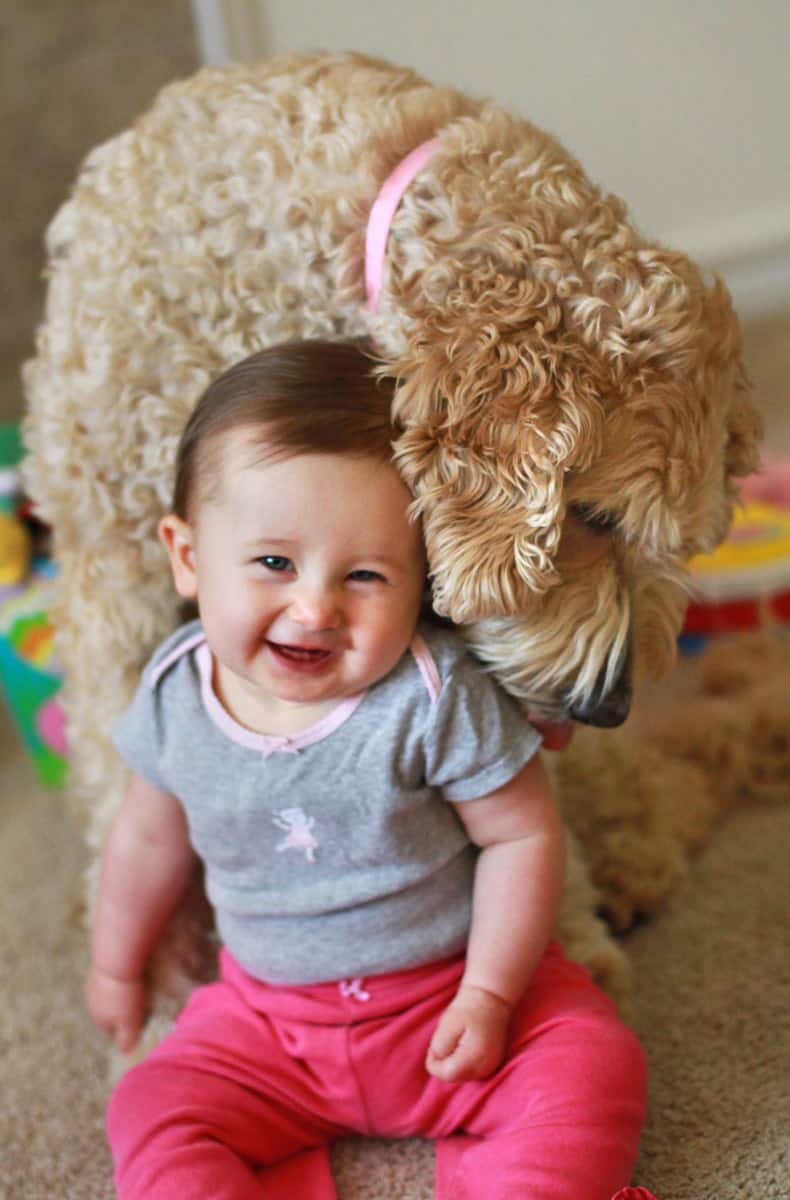
📏 How Big Does a Goldendoodle Get?
We have had two goldendoodle female dogs and they both reached about 24 inches tall and 65 pounds. However, males can grow to be a little bit bigger than the female goldendoodle. The size also varies depending on whether the breed is a mini or not.
- Mini goldendoodles can grow to be 25 – 35 pounds and 15 – 17 inches tall.
- Standard goldendoodles can grow to be 50 – 90 pounds and 20 – 26 inches tall.
❓ F1 Goldendoodle FAQs
The average price of a standard F1 goldendoodle usually ranges somewhere between $1000 and $2500. Mini doodles can range up to $5000. These prices range depending on the quality, color combination, how reputable the breeder is, and geographic location. Both times we bought our doodles, we bought from a first-time breeder, so the price was less than average, but overall, we were very satisfied with our pups. If you go this route, you have to ask about any health issues the parents have. Even though we bought from a first-time breeder, we made sure the parents of our pups were healthy. First-time breeders can be reliable as long as they offer a genetic test to check for inherited diseases, a reasonable price, veterinary records, and proper socialization for the puppies.
From my experience, goldendoodles do not smell and stink in the same way as shedding / non-hypoallergenic dogs. I mean if they go outside and stay out there for a while, they will still come in with a bit of a dirt smell in their fur, but in my opinion, it is not nearly as bad as other dogs. We have owned other breeds such as Great Danes, black labs, and miniature pinschers that all smelled worse than our goldendoodles.
The F stands for “filial” and it means to denote a generation. It’s a way of relating the relationship of the offspring to the parents. So, F1 means the first generation of the goldendoodle dog.

🥁 Conclusion About the F1 Goldendoodle and Other Generations
I hope this article helps you understand the F1, F1B, F2, and all the other generations of goldendoodles we discussed. Hopefully, it aids in helping you make a better choice of what type of goldendoodle you want. You can’t really go wrong; all goldendoodle types are good dogs! In my opinion, there are not that many significant differences across all of the goldendoodles. Most of the differences are related to if the dog will have a very curly coat, a straight coat, or if the dog sheds.
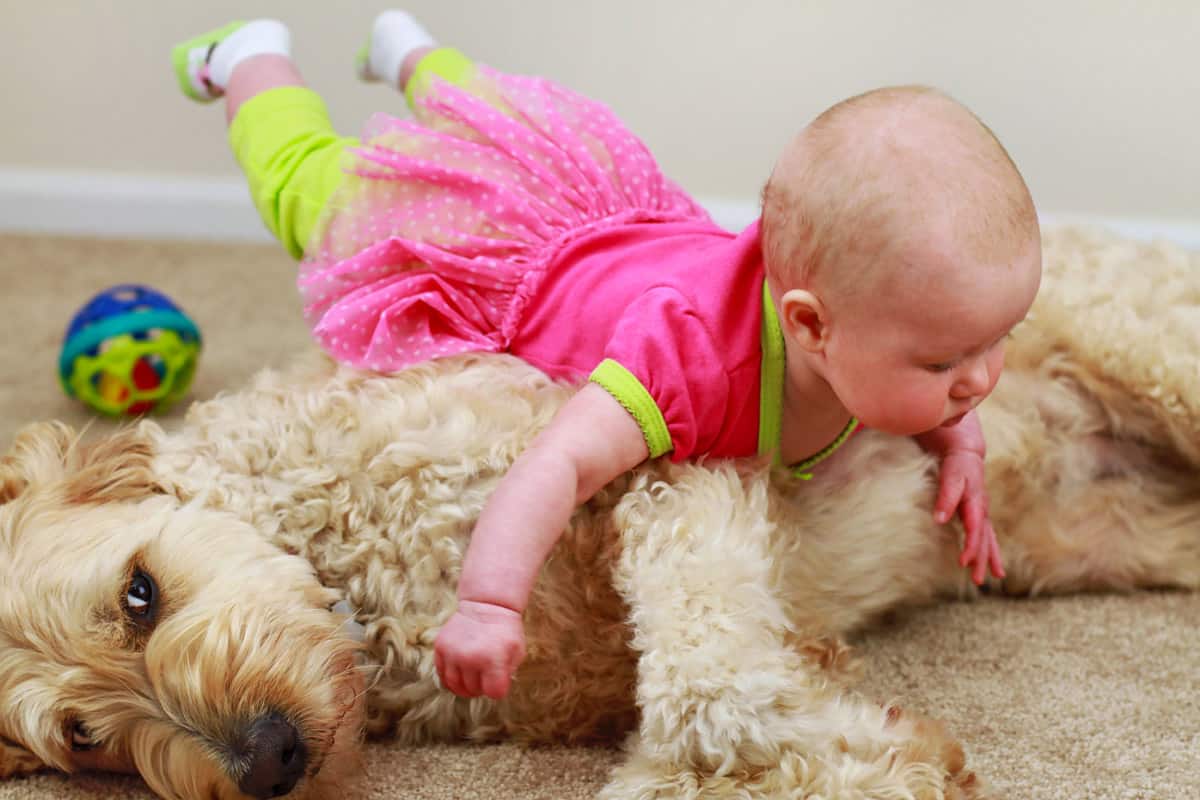
Feel free to leave a comment and tell us what generation of goldendoodle you have as well has what their best traits are!
A husband and father to two daughters, Kylie and Kaycie. Ken is an elementary school teacher with two master’s degrees and extensive experience working with children. When he is not teaching in the classroom, he can also be found coaching kids in sports, being active, and playing with his goldendoodle dog.
More by Ken ➜

